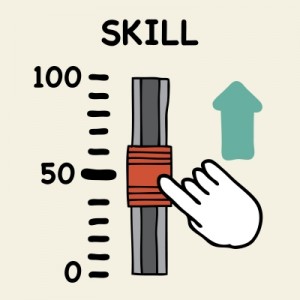“Coincidence cannot replace motivation.” — Debra Dixon
I’ve been reading Debra Dixon’s GMC: Goal, Motivation, and Conflict. Her discussion about coincidences spoke to me.
I wanted a scene between my hero and his widowed sister-in-law, the heroine, concerning an ugly secret they share. Their low opinions of each other cause them to avoid each other’s company.
1. A solution: At an apartment complex, the heroine hears bad news regarding the secret. The hero drives by and sees her exit. He stops to talk to her, which irks her.
2. Why it doesn’t work. Ms. Dixon might say something like this: “The reader will roll her eyes, Zoe. She’ll want to know why the hero stops to talk to the heroine when you’ve already shown he’s uncomfortable around her and glad he’ll never have to help her again. He’d more likely pretend he didn’t see her.”
The hero has no motivation, no good reason, to stop and talk to her.
3. The needed stake. Fortunately, I developed a prior scene between the hero and his mother. He mentions he’s glad God’s one-time call for him to help his sister-in-law is over. His mother is upset the heroine has been distancing herself from the family. She thinks her son is God’s answer to draw the heroine back. She implores the hero to befriend the heroine.
The hero loves his mother and dislikes her being upset, and him feeling guilty. So, he’s motivated to contact the heroine.
4. A more satisfying solution. The hero knows if he calls his sister-in-law she’ll invent an excuse to avoid him. So, he’s motivated to drop in on the heroine. But he sees her car leaving the parking lot. He doesn’t want to disappoint his mother when she asks again if he’s befriended the heroine. So, he’s motivated to follow her. At an apartment complex, she enters before he can reach her. He decides to wait awhile for her to exit. He’ll ask her to dinner, and if she declines, he can tell his mother he honestly tried.
This solution gives the hero a reason to meet the heroine at the complex.
5. Why Motivation helps tension. If the two bumped into each other, the heroine would have little reason to think he’s trying to make her life miserable.
In the first solution above, the heroine and the reader would be baffled that he stopped to talk to the heroine without a good reason.
The more satisfying solution supplies tension and growth:
When the heroine appears distressed as she exits the apartment, sympathy forms in him. She’s surprised with his presence. She declines dinner and demands why he’s there. With her attitude, his sympathy wanes. He privately blames his mother for getting him into this situation. Frustrated, he blurts his promise to his mother. This, the bad news she received inside the apartment, and her need to tell someone causes her to weep. Pricked by guilt at his selfishness, he realizes his mother is right. The heroine needs a friend. They talk.
Ms. Dixon teaches more about different kinds of coincidences. I recommend her book.
Why coincidences hurt your story and how to fix them. Click to tweet.
What kinds of coincidences in a book bother you?
 April 9-10 enter a chance to win Calculated Risk on author Sharon Srock’s blog.
April 9-10 enter a chance to win Calculated Risk on author Sharon Srock’s blog.

















 RSS - Posts
RSS - Posts